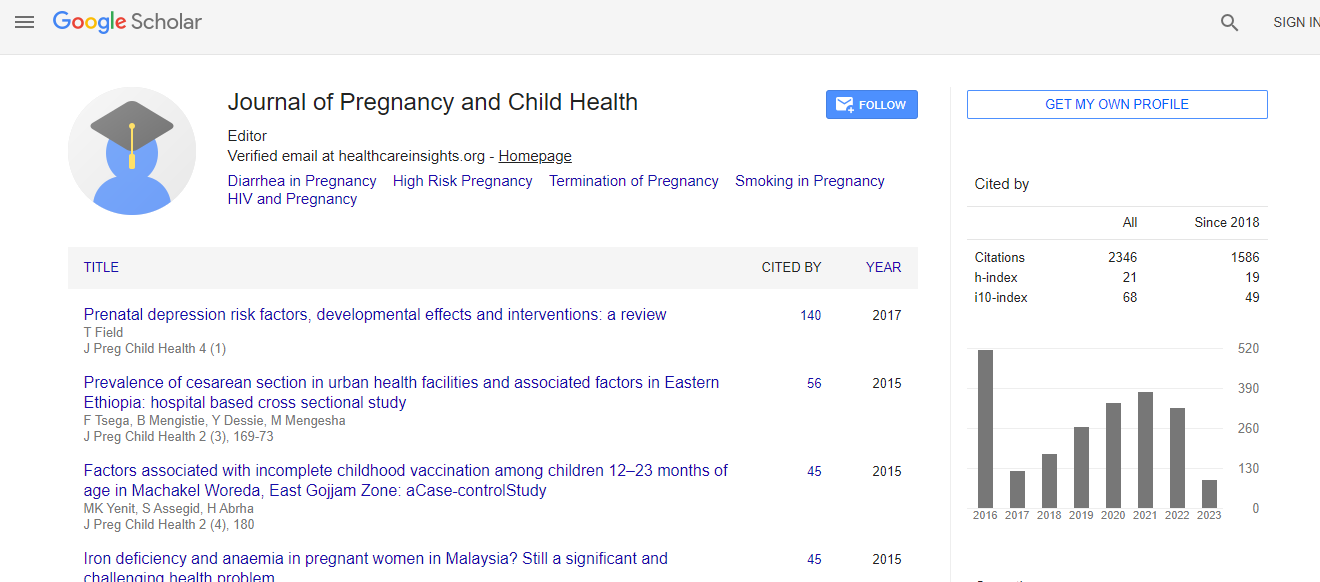Research Article
HIV Infection Complications during Childhood
Daniela Pereira1, Marina Oliveira Martins2, Laura Hora Marques3 and Humberto S Machado1,4,5*
1Instituto de Ciências Biomédicas Abel Salazar, Universidade do Porto, Portugal
2USF Tornada, ARS Lisboa e Vale do Tejo, Portugal
3Serviço de Pediatria, Centro Hospitalar Universitário do Porto, Portugal
4Serviço de Anestesiologia, Centro Hospitalar Universitário do Porto, Portugal
5Centro de Investigação Clínica em Anestesiologia, Centro Hospitalar Universitário do Porto, Portugal
- *Corresponding Author:
- Machado HS
Serviço de Anestesiologia
Centro Hospitalar Universitário do Porto
Portugal, Portugal
Tel: 351935848475
E-mail: hjs.machado@gmail.com
Received date: March 28, 2017; Accepted date: April 13, 2017; Published date: April 18, 2017
Citation: Pereira D, Martins MO, Gonçalves LE, Machado HS (2017) HIV Infection Complications during Childhood. J Preg Child Health 4:313. doi:10.4172/2376-127X.1000313
Copyright: © 2017 Pereira D, et al. This is an open-access article distributed under the terms of the Creative Commons Attribution License, which permits unrestricted use, distribution and reproduction in any medium, provided the original author and source are credited.
Abstract
According to the World Health Organization (WHO), about 2.1 million children under the age of 15 were infected with the Human Immunodeficiency Virus (HIV) in 2015. The introduction of combined antiretroviral therapy (CART) has changed the natural history of Patients infected with HIV. Chronic diseases associated with HIV infection have taken a more prominent role in relation to acute infections. This literature review aims to systematize the complications associated with HIV infection in the pediatric age (defined by the WHO as that between birth and 19 years) in two large groups: infectious diseases and non-infectious diseases. In the group of infectious diseases, it is intended to emphasize the most prevalent infections in the pediatric age, while in the group of non-infectious diseases we aim to present the main complications by organs and systems. The search engine used to conduct the search was the PubMed and The Pediatric Infectious Disease Journal. In this paper, HIV infection is treated as a systemic infection, with the direct consequences of infection per se and the indirect consequences associated with the introduction of CART. The main complications are infectious, mucocutaneous, cardiovascular, respiratory, neurological, nephrological, gastrointestinal, otorhinolaryngological, ophthalmologic, endocrinological and neoplastic, as well as immune reconstitution syndrome associated with CART. In conclusion, the pediatric complications associated with HIV infection vary with the immunosuppression state, the transmission route, the age at infection contraction and at the introduction of CAR and the geographical location of the infected children. CART decreased the incidence of opportunistic infections and neoplasms, but paradoxically is associated with an increased incidence of immune reconstitution syndrome, cardiovascular diseases, metabolic syndrome and lipodystrophy. Early detection of complications improves the quality of life of the pediatric population. Thus, the research and training of health professionals who accompany them is crucial.

 Spanish
Spanish  Chinese
Chinese  Russian
Russian  German
German  French
French  Japanese
Japanese  Portuguese
Portuguese  Hindi
Hindi 
